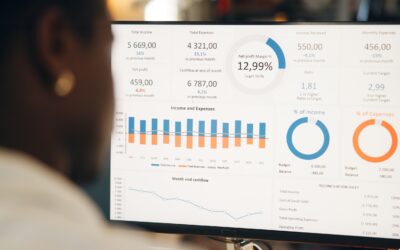Every donor wants to feel like their gift matters. They don’t want to be treated as one of a thousand—they want to be remembered as one of one. But for most nonprofit teams, the idea of personalizing every donor email, thank-you, and update sounds impossible.
The challenge isn’t caring enough. It’s capacity. Small teams juggle too many tasks to write individual notes or manually segment lists. Large organizations drown in data but struggle to make it meaningful.
That’s where personalization at scale comes in—a strategic approach to making every donor feel seen, even when automation is doing the heavy lifting.
Why Donor Personalization Matters
Donors give based on emotion, not obligation. They want to see that their contributions make a real difference. A personalized message proves you know who they are and why they give.
When nonprofits personalize communication, they see better results across every metric—higher open rates, more repeat gifts, and longer donor lifespans. But true personalization is about more than inserting someone’s first name into an email. It’s about delivering the right message, to the right donor, at the right moment.
As discussed in Donor Segmentation, the foundation of personalization is understanding your donors’ motivations and behaviors. Once you can segment by giving frequency, interest, or impact area, you can build communication that feels individualized, even when it’s automated.
The Myth of “One More Tool”
Here’s what most nonprofits do: they buy another platform. A CRM for donor tracking. An email service for campaigns. Maybe even an automation tool for reminders. Before long, the team is managing six systems, each with its own logins, costs, and learning curves.
It’s not scalable—and it’s not sustainable.
Solafund was designed to eliminate that chaos. Within one dashboard, you can manage donations, segment donors, trigger automations, and send personalized emails—without exporting or syncing data.
That means no more chasing down integrations or paying for add-ons like Mailchimp or Salesforce. Your donor data lives where your giving happens. Personalization becomes frictionless.
Personalization Starts with Better Data
You can’t personalize what you don’t understand. The best fundraising teams collect data that reveals story, not just stats. Solafund automatically stores key donor details like total lifetime giving, first gift date, and recurring status—turning raw numbers into relational insights.
Once that data exists in one place, you can group donors meaningfully. For example:
- First-time donors who gave in the past 30 days
- Recurring givers who paused their donations
- High-impact donors who’ve given to multiple campaigns
Each group deserves a different message, tone, and timing. By understanding patterns, you’re not guessing—you’re responding.
Segmentation Without the Spreadsheets
Traditional segmentation requires exporting data, sorting in spreadsheets, and re-importing lists. That’s where burnout begins.
With Solafund, segmentation happens automatically. You can build smart lists that update in real time based on behavior. For example, donors who give twice within a month can be automatically tagged as “likely to upgrade.” Those who haven’t given in 90 days can move to a re-engagement list.
Automation takes care of the mechanics so you can focus on the message.
Crafting Messages That Feel One-to-One
Personalization fails when it feels robotic. Here’s how to keep it human, even at scale:
- Use empathy-first language: Write as if you’re talking to one person, not an audience.
- Reference impact, not transaction: Replace “your donation of $50” with “you provided three students with textbooks.”
- Vary your tone based on relationship stage: A first-time donor needs warmth and reassurance; a long-term supporter wants insider access.
You can explore examples of emotionally intelligent communication in Donation Pages and Emotional Engagement, where storytelling principles drive stronger donor response.
Automating the Human Touch
The biggest misconception about automation is that it replaces authenticity. Done right, it multiplies it.
Solafund’s automation tools allow you to build communication sequences triggered by donor actions—like first donations, milestone anniversaries, or recurring payments. These messages can include dynamic merge fields that insert real donor data: names, campaign names, amounts, and even impact stats.
For example:
- A first-time donor automatically receives a personalized thank-you with their gift amount and campaign impact.
- A repeat donor gets a “one-year anniversary” message celebrating their ongoing support.
- A paused recurring donor receives an empathetic note with a soft reactivation link, not a guilt-driven ask.
These touchpoints happen automatically, but they read as handwritten and timely. That’s personalization at scale—the donor feels remembered without the team feeling overwhelmed.
Balancing Personalization with Privacy
In an age of data sensitivity, personalization must be responsible. Donors trust you with personal information, and that trust must be protected.
Always limit what’s visible in communication templates. For example, referencing a campaign name or first gift date is powerful. Quoting internal notes or donation history crosses a line.
Transparency, as explored in Fundraising Transparency and Donor Privacy, is what separates ethical personalization from intrusive marketing.
When donors feel known but not watched, you build credibility and loyalty.
When to Personalize (and When to Simplify)
Not every message needs a custom tag. Over-personalization can backfire if it feels forced. Use your energy where it counts most—moments of gratitude, celebration, and re-engagement.
Focus your personalization strategy on these key milestones:
- First gift acknowledgment – Immediate and emotional.
- Impact follow-up – Within two weeks, proving their gift mattered.
- Milestone celebrations – Anniversaries or cumulative totals.
- Reactivation outreach – Personalized re-engagement for lapsed donors.
For general updates or newsletters, simple segmentation—like separating one-time from recurring donors—keeps communication relevant without overcomplicating the workflow.
How to Measure the Effectiveness of Personalization
If you’re not measuring outcomes, you’re guessing. Track metrics that matter:
- Open rates (are donors engaging?)
- Click-through rates (are they exploring further?)
- Follow-up gifts (are they taking action?)
Solafund’s dashboard displays these insights in one place. You can view engagement data by donor type, campaign, or automation. That means no cross-referencing between systems—just actionable clarity.
Scaling Without Sacrificing Culture
Personalization at scale isn’t just a technology strategy—it’s a cultural one. It requires alignment between your fundraising, communications, and operations teams.
When your staff understands that personalization is about empathy, not effort, the tone of your communication naturally shifts. Your donors will notice.
Automated tools amplify your team’s intent. They don’t replace the human heart behind it.
Think of Solafund as your co-pilot, handling the repetitive while you handle the relational.
What Personalization Looks Like in Practice
Imagine this workflow:
- A new donor gives $25 through your campaign page.
- They immediately receive a branded thank-you email that references their specific campaign.
- Three days later, they get a short story showing the impact of their gift.
- Two weeks later, a note from your executive director personally invites them to stay connected.
- After 30 days, they’re added to a “first-time donor nurture” list, automatically managed within Solafund.
Every touchpoint feels intentional. Every message feels personal. Yet no one on your team lifted a finger after the initial setup.
The Future of Donor Relationships Is Integrated
The days of manually syncing CRMs, email tools, and spreadsheets are numbered. Nonprofits need systems that work together naturally—without draining staff energy.
Solafund was built for this reality. It’s not a tool to add to your tech stack. It’s the stack itself.
Personalization at scale isn’t about doing more—it’s about doing the right things automatically, with the right tone, for the right donor.
Final Thought
Donor relationships grow on trust, gratitude, and timing. Automation gives you the freedom to deliver all three consistently.
When you combine personalization with simplicity, your communication doesn’t just scale—it deepens.
You don’t need more software. You need one platform that makes every donor feel remembered, every time. That’s what Solafund does best.




0 Comments